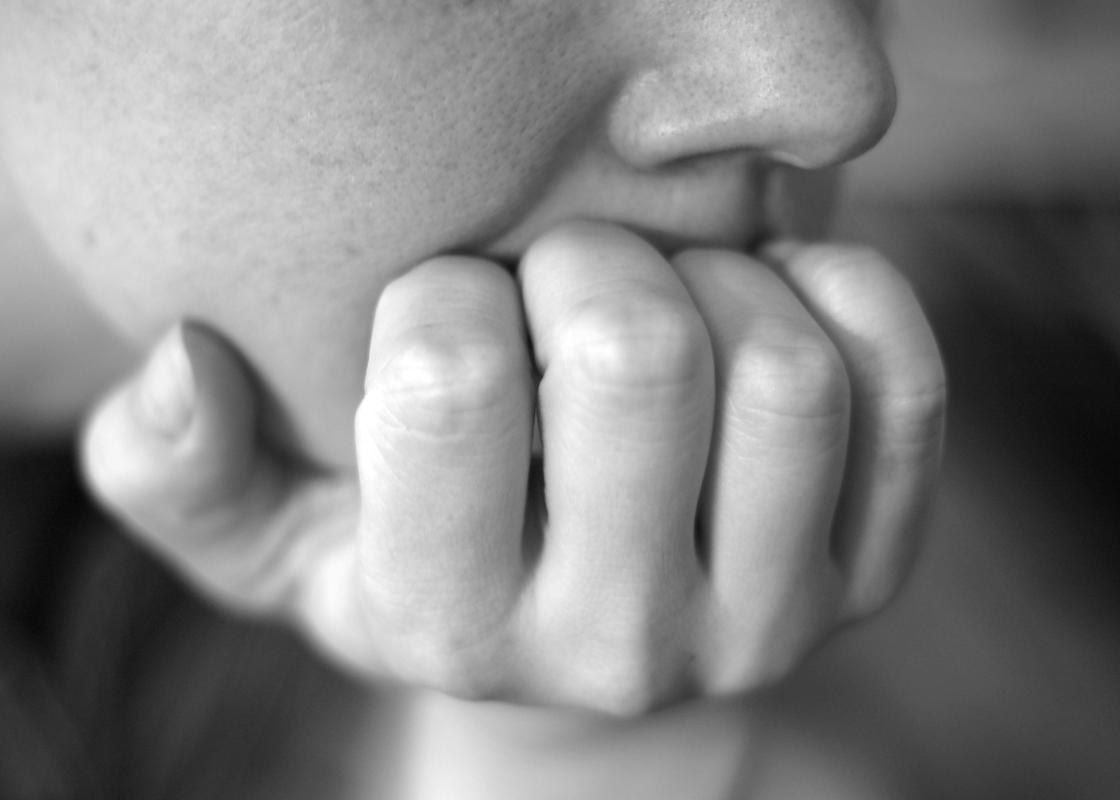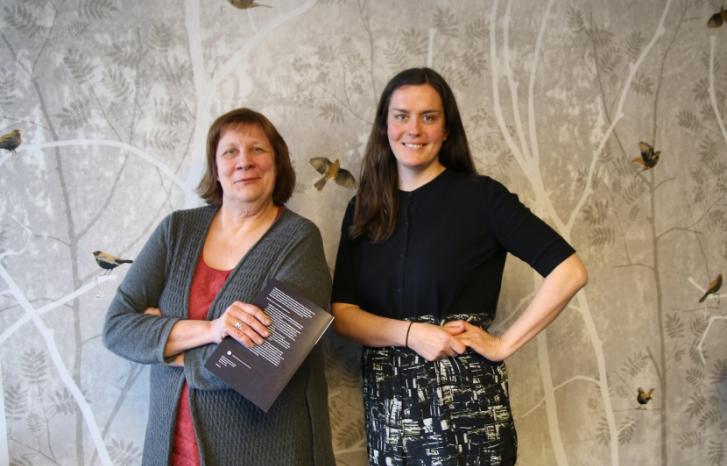A woman who has been sexually assaulted is brought to the Sexual Assault Centre at the Oslo Emergency Ward, where she receives medical assistance and other forms of care. The centre also performs a forensic medical examination: They collect biological trace evidence, conduct a medical examination and document the injuries with written descriptions, drawings and photographs. The woman must then decide if she wants to report the assault to the police. But even though she reports the incident, the police do not always request the documentation gathered at the centre and use it in their criminal investigation.
In her doctoral thesis in medicine, Dr. Helle Nesvold investigates the entire case flow of sexual assaults, from the time the person comes to the self-referral sexual assault centre to the time the case is heard in court, including whether a conviction is made. Nesvold’s study encompasses all the cases handled at the Oslo Sexual Assault Centre in 1996 and in 1999.
“Whether or not the police request the documentation from the centre can have an impact on the legal outcome of the case. In my study I divided all the reported cases into two groups: in one group the police had requested the forensic medical documentation about the cases and in the other group the police had not done so. Far more cases in the first group were brought to court, and convictions were obtained in 22 percent of the cases, whereas the conviction rate in the second group was only 6 percent,” Nesvold says.
“Persons who arrive early at the centre usually report the incident quickly. In these cases the biological evidence can be secured in the best possible way, and the police are more likely to conduct an investigation of the crime scene and may have more witnesses to interview. As a result, the odds of conviction are much greater. I think the Matthew effect applies here.”
The Matthew effect refers to the phenomenon in which the rich get richer and the poor get poorer. Persons who came quickly to the self-referral centre after the assault reported the incident to the police more often than those who came later to the centre, according to Nesvold. Of the 354 cases handled in 1996 and 1999 at the Oslo Sexual Assault Centre, 180 of these were reported to the police.
Among the reported cases of assault, a number of factors impact the police’s decision to use the documentation gathered at the centre.
Inconsistent coding
“The police put in a request for forensic medical documents in 84 percent of the reported cases when this information was available. They analyzed biological trace evidence in only half of the cases when this was available. I should mention here that DNA registries did not exist during the period I took my cases from, so that it would have been pointless to analyze biological trace evidence if the perpetrator was unknown. But with today’s established DNA registries the situation is completely different.”
Nesvold investigated in which cases the police requested the injury documentation and trace evidence analyses and she found that several factors influenced their decision.
First of all, the way the police coded the case was a deciding factor. If the case was not coded as rape, it was less likely that the police would put in a request for the injury documentation or trace evidence analyses. The police enter a main code in their registry, but if a perpetrator is prosecuted, he may face charges on several counts. Nesvold has looked at the main codes in these cases. In one-third of the cases where the police did not code the case as rape, the person said the assault involved penetration, but the case was coded as something else, such as engaging in a sexual act with a child under 16 years old or abuse of position.
“The codes assigned by the police seemed inconsistent with the descriptions given to us by the individuals who had been assaulted. Coding should therefore not be a criterion for whether or not the evidence is used,” says Nesvold.
She adds that it might be beneficial for investigations of serial criminals to analyze trace evidence in many different cases, including attempted rape, because these perpetrators often commit different types of acts against their different types of victims.
A budgetary matter
Secondly, Nesvold’s study shows that if the incident was reported during the last four months of the calendar year, it was less likely that the police would request the documentation and analyses.
“This is probably related to the budget, since the individual police station must pay to acquire the evidence. This situation has improved somewhat in recent years, as the analysis of biological trace evidence such as DNA is funded by a central allocation. But the individual police station must still pay to obtain the injury documentation.”
A third finding of Nesvold’s study shows that the police were less likely to request injury documentation if they suspected that the person assaulted had an addiction problem.
Finally, the study shows that if the person was under 20 years of age, it was more likely that the police would request the trace evidence analysis.

“In my opinion, the police could have made a more systematic effort to obtain all the available evidence from the centre in those cases where the individuals gave their consent. During the process up until the case is brought to court or until the decision is taken to drop the case, the police and the prosecuting authority assess the case and the criminal investigation on the basis of the existing evidence, credibility and the odds of getting a conviction. Other scientific literature points out that discretion is used in making these assessments, and that this discretion may be influenced by myths and stereotypes. In these cases documentation from the sexual assault centre can be crucial,” says Nesvold.
She adds that this is also important from a human rights perspective, through which the person has the right to a thoroughly prepared case, regardless of the assessment of the odds of a conviction. Moreover, a good criminal investigation is also essential in matters related to the Norwegian government’s scheme for state compensation to victims of violent crime, which does not necessarily correspond to a criminal conviction.
Wait to seek help
In her study, Nesvold has also examined how the sexual assault centre is used, who comes there quickly and who waits to seek help. She found that the youngest individuals assaulted and those who know their assailant wait the longest before seeking help. The type of coercion used by the perpetrator is also a factor in how long the person waits. Those who have been coerced verbally come later to the centre than those who have been forced with physical violence.
“Many people have a stereotypical understanding of rape in which the woman is brutally attacked by a strange man and the assault involves a great deal of physical violence. Therefore, it is difficult for many people to define their experience as a sexual assault, even though this might be the case from a legal perspective.”
Another explanation for why many persons wait to come to the centre is that they experience a trauma reaction from the assault. A trauma reaction can arise following powerful, shocking events, and entails feelings of confusion, guilt and shame. It can also lead to avoidance behaviour, the desire to avoid remembering what has happened.
“As a consequence, not everyone is capable of tackling the situation by going to the centre and making a police report immediately. Support from the person’s family and friends can be crucial in a situation like this,” says Nesvold.
Scheme for sexual assault centres is crucial
Before the establishment of sexual assault centres in Norway, one had to report the assault to the police first, and then the police could order a forensic medical examination. Now the person can get help at the sexual assault centre first, and the centre can perform the examination and gather trace evidence. Then, at a later stage, she can consider reporting the incident to the police. If she waits a while to file a police report, this will not necessarily affect the quality of the medical evidence.
In her doctoral thesis, Nesvold and her research colleagues compare the situation in Oslo with the capital cities of Iceland, Denmark and Finland. Like Norway, Iceland has a self-referral sexual assault centre, as opposed to Denmark and Finland which do not. In Denmark and Finland persons who are assaulted must first report the incident to the police, and then the police decide whether they will order a forensic medical examination.
The researchers found that the centres in Oslo (Norway) and Reykjavik (Iceland) see two to three times more women who file police reports than is the case in the two other cities (33 and 58 versus 12 and 18 per thousand women, respectively). The calculation compensates for the different populations of the cities, and the difference in reported cases is seen especially for young people under the age of 25 and in cases where the person knows the perpetrator.
“The explanation for this may be that there are fewer obstacles associated with going to a centre as opposed to the police. We provide assistance with filing a police report and we perform the medical examinations and gather trace evidence, but the person herself can decide if she wants to report the assault.”
Although the statistics in Nesvold’s study are old, she believes that the study is still relevant.
“The case flow from assault to the sexual assault centre to the courts is the same as before. Since the police and the health service do not routinely exchange information about cases, we don’t know the extent of their interaction today, but in our experience the police still don’t request the documentation and trace evidence for all the reported cases. However, we assume that the frequency of trace evidence analyses has increased. The study can also be used as a baseline, as a basis for comparison, to study how the situation has developed up to the present day, if researchers get permission to repeat the study.”
Translated by Connie Stultz
Nesvold, Helle M.F.: Health services for sexually assaulted. Complainants’ and judicial use of a self-referral centre; case-flow from assault to legal outcome.
Doctoral thesis approved by the Faculty of Medicine, University of Oslo, 2010.
The doctoral thesis consist of a summary and four scientific articles:
Different Nordic facilities for victims of sexual assault: a comparative study
Nesvold H, Worm AM, Vala U, Agnarsdottir G.
Acta Obstet Gynecol Scand 2005;84:177 – 83
Sexual assault centres: Attendance rates, and differences between early and late
presenting cases
Nesvold H, Friis S, Ormstad K.
Acta Obstet Gynecol Scand 2008;87:707 – 15
Sexual assault centres and police-reporting - an important arena for medical/legal interaction
Nesvold H, Ormstad K, Friis S.
Submitted to Journal of Forensic Sciences
To be used or not to be, that is the question.
Legal use of forensic and clinical information collected in a self-referral Sexual assault centre
Nesvold H, Ormstad K, Friis S.
Submitted to Journal of Forensic Sciences
Helle Nesvold, M.D., is the chief medical officer at the Oslo Sexual Assault Centre located at the Oslo Emergency Ward.



